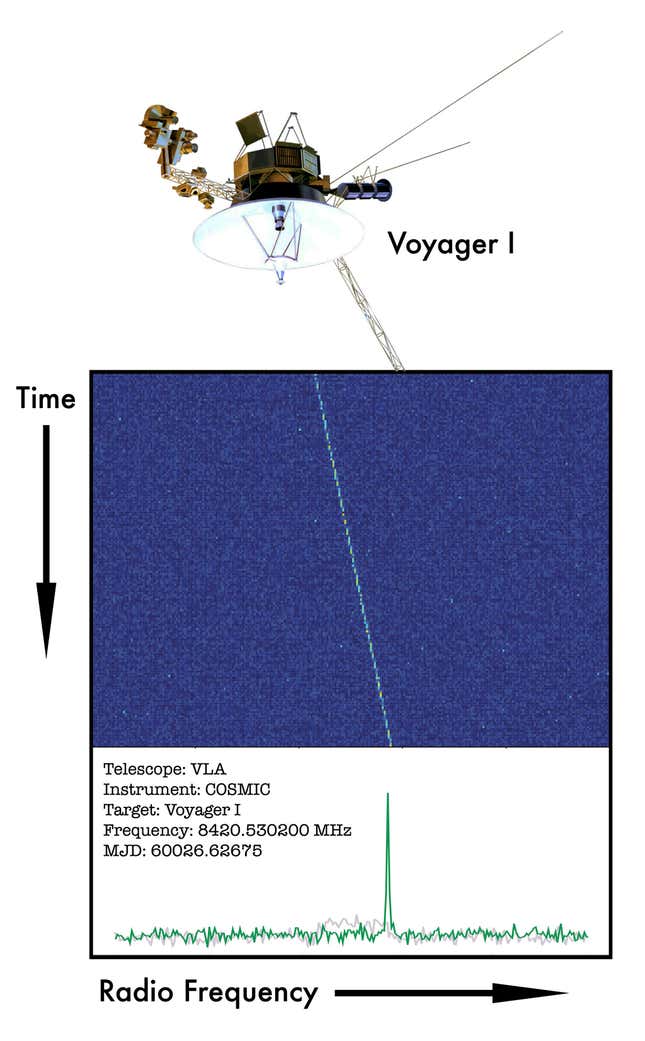The SETI Institute said this week that the Very Large Array, a National Science Foundation telescope in New Mexico, will join the hunt for radio signals from extraterrestrial civilizations.
These signals would be technosignatures, so called because they are radio waves that can only be produced by artificial transmitters. SETI, or the search for extraterrestrial intelligence, has long focused on radio searches. Some unusual radio signals from deep space, like pulsars, were initially suspected to be alien in nature.
Advertisement
The Karl G. Jansky Very Large Array (VLA), named for an engineer who detected radio waves coming from outer space in 1931, began operating in 1980 and is run by the National Radio Astronomy Observatory. It is made up of 27 radio dishes, each of which is 82 feet across. The telescope has spotted massive events like ancient galactic explosions but also detects weird radio signals from deep space, the sources of which remain a mystery. The latter will become a focus of the VLA, as the telescope hones in on radio emissions that could be associated with artificial sources. In other words, potential alien communiqués.
The array could shed more light on the bursts whose origins have yet to be fully understood. For example, in 2021, a corkscrewing radio burst emanating from near the center of the Milky Way was briefly detected, but astronomers don’t know what produced it.
Advertisement

“The VLA is the go-to instrument for radio astronomers, but this is the first time we are using it in a wide-ranging and continuous search for technosignatures,” said Andrew Siemion, the Bernard Oliver Chair for SETI at the SETI Institute, in an institute release.
Advertisement
The VLA’s ordinary (comprehensive) scouring of radio sources in the night sky will continue, but a copy of the data it collects in those efforts will be passed along to a receiver collecting a specific channel of radio waves—the channel associated with artificially produced radio waves. The system is named the Commensal Open-Source Multimode Interferometer Cluster (you can just call it COSMIC.)
“COSMIC operates commensally, which means it works in the background using a copy of the data astronomers are taking for other scientific purposes,” said Paul Demorest, a researcher and group lead at the National Radio Astronomy Observatory, in the release. “This is an ideal and very efficient way to get large amounts of telescope time to search for rare signals.”
Advertisement
Radio signals from approximately 10 million star systems will be studied using the new processing system, according to the SETI Institute, which stated that the system will make the VLA’s search 1,000 times more comprehensive than previous searches for extraterrestrial intelligence.
The system was tested against radio signals from the Voyager 1 spacecraft, which is the most distant human-made object from Earth at about 14.8 billion miles away. Because Voyager 1 is the most distant confirmed technosignature, it proved out the system’s ability to identify artificial signals.
Advertisement
Throwing the VLA’s might behind SETI searches will hopefully boost the number of intriguing radio signals astronomers can interrogate, and perhaps clarify the nature of previous radio bursts whose origins have remained unknown.
The VLA’s successor—the Next Generation Very Large Array—will provide even greater sensitivity and resolution. The ngVLA is set to begin scientific observations in 2029 and be fully operational by 2035.
Advertisement
Answers are out there, and the addition of COSMIC to VLA’s toolbox will hopefully bring astronomers closer to them.
More: A Beacon in the Galaxy: Scientists Update Humanity’s Message to Aliens
Services Marketplace – Listings, Bookings & Reviews